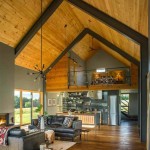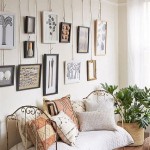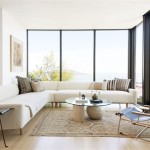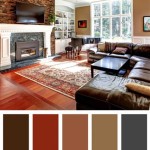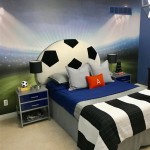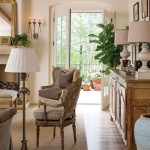Space-Saving Living Room Décor Ideas
In the context of contemporary living, particularly in urban environments, space optimization has become a paramount concern. Living rooms, often the nucleus of a home's social activity, are prime candidates for strategic design practices. Implementing space-saving strategies does not necessitate compromising on aesthetics or comfort. Instead, it involves a considered application of design principles, furniture selection, and organizational techniques. The following outlines several effective space-saving living room décor ideas that can transform a cramped space into a functional and visually appealing area.
Multifunctional Furniture
A cornerstone of space-saving design is the judicious selection of furniture that serves multiple purposes. These items maximize utility, reducing the need for numerous individual pieces and subsequently freeing up valuable floor area. A common example is a sofa bed, ideal for guest accommodation while also serving as the primary seating arrangement. Another advantageous choice is an ottoman with built-in storage. These are particularly useful for stowing away blankets, pillows, or other living room essentials. Coffee tables with lift-top designs are another effective option, offering a surface for drinks and magazines while also concealing storage compartments. Furthermore, consider dining tables or consoles that fold out or extend, providing flexibility for both everyday use and entertaining.
Vertical Space Utilization
In environments where floor space is at a premium, the utilization of vertical surfaces becomes crucial. This involves leveraging walls to enhance storage and display capabilities. Floor-to-ceiling shelves provide an expansive storage area, accommodating books, decorative items, and media components. Floating shelves are another excellent alternative, offering a clean and minimalist aesthetic while providing display space without occupying floor area. Consider vertical storage solutions near entryways. Tall, narrow cabinets can be used to store coats, shoes, and other items, thereby reducing clutter and enhancing the overall organization of the living space. Furthermore, mirrors can also be strategically placed on walls not only to reflect natural light but also to create the illusion of a more expansive area.
Strategic Furniture Placement and Layout
Effective furniture placement can dramatically impact the perceived spaciousness and functionality of a living room. It is essential to evaluate the architectural layout of the room and arrange furniture to maximize the available space. Employing a layout that encourages natural flow and movement is a fundamental principle. Avoid placing furniture that obstructs walkways or hinders access to doors and windows. Consider a seating arrangement that incorporates the use of corners. Corner sofas or sectional couches provide ample seating while taking up less space than individual pieces. Additionally, consider the placement of larger items, such as television units. Mounting a television on the wall, instead of using a bulky entertainment center, can immediately free up floor space and provide a cleaner aesthetic. Consider using a rug to define the boundaries of the seating area, establishing a sense of visual order within the room.
Color Palette and Lighting
Color and lighting play a significant role in creating the impression of spaciousness. Light and neutral colors are generally preferred in smaller living rooms, as they reflect light and make the area appear larger. Avoid using dark or heavy colors, which can tend to absorb light and make a room seem cramped. Consider using a monochromatic color scheme with variations of light tones to create cohesion and to enhance the illusion of open space. Beyond color, the use of light is essential. Maximize natural light by keeping windows unobstructed and using light-colored window treatments. Incorporate a combination of ambient, task, and accent lighting to create a well-lit environment. Consider incorporating recessed lighting, which provides ample illumination without taking up floor or wall space. Use floor lamps and table lamps strategically to provide task lighting and to add warmth and ambiance.
Mirrors and Reflective Surfaces
Mirrors are an invaluable asset in small spaces. They function to reflect light, contributing to an amplification of the room's perceived size. A large mirror can be positioned strategically to reflect a window or a light source, effectively doubling the available light within the room. Consider using a decorative mirror as a focal point, creating a sense of visual interest while also enhancing the illusion of space. In addition to mirrors, reflective surfaces such as glass-topped coffee tables or metallic accents also contribute to the perception of openness. Incorporate elements with reflective qualities, such as polished metal or glossy finishes, to bounce light around the room and create a sense of spaciousness.
Decluttering and Minimizing
One of the most crucial aspects of space-saving design is a commitment to decluttering and minimizing possessions. A living room that feels cluttered is likely to appear smaller than it actually is. Implement a rigorous decluttering strategy and remove any unnecessary items from the room. This involves regularly donating, selling, or discarding items that are no longer needed or used. When organizing personal belongings, consider the use of storage containers and baskets to maintain tidiness. Utilize closed storage solutions, such as cabinets or drawers, to conceal items and create a clean and organized aesthetic. It can be prudent to periodically reassess the contents of the living room and eliminate anything that does not enhance its functionality or aesthetic appeal.
Incorporating Slim and Streamlined Designs
When selecting furniture and décor, opt for slim and streamlined designs. Furniture with clean lines and a minimalist aesthetic tends to occupy less visual and physical space than elaborate or ornate pieces. Choose furniture that is elevated off the ground to avoid making the area feel heavy or cramped. Consider selecting pieces with legs, as this can improve the flow of natural light and give the room a more open feel. Thin-framed artwork and accessories also contribute to a feeling of lightness. Avoid bulky or overstuffed furniture. Instead, choose pieces of furniture that are scaled appropriately to the size of the room in order to maximize space and visual appeal.

10 Smart Space Saving Living Room Furniture Design Cafe

6 Space Saving Ideas For Small Homes Hipcouch Complete Interiors Furniture

10 Smart Space Saving Living Room Furniture Design Cafe

Space Saving Design Ideas For Small Living Rooms Decoist

10 Space Saving Ideas That Can Transform Your Small Apartment Bright Side

15 Space Saving Ideas For Modern Living Rooms 10 Tricks To Maximize Small Spaces Property Brothers Room Decor Designs

15 Space Saving Ideas For Modern Living Rooms 10 Tricks To Maximize Small Spaces Room Furniture Layout Design

Space Saving Design Ideas

Stylish And Space Saving Small Room Décor Ideas

29 Modern Space Saving Living Room Ideas Godfather Style Small Design Apartment Decor
